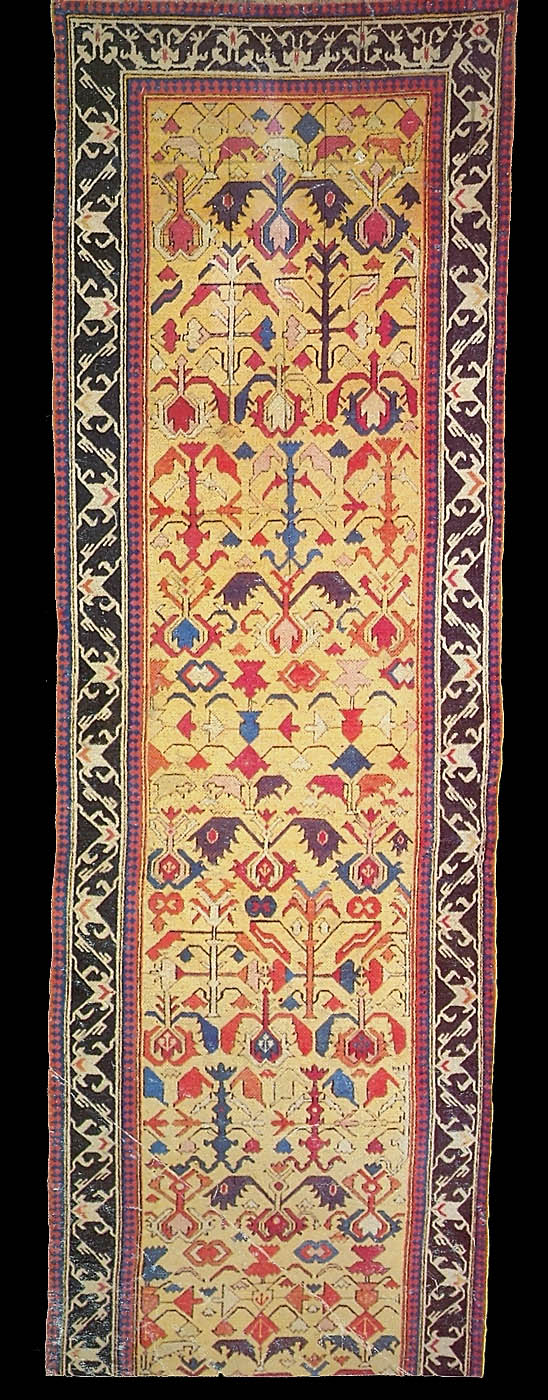|
Early Kuba rug
with "flowering shrubs" motif, Salmasöyüd design, early 19th century, Mountainous Kuba Region,
possibly Söhüb or Khyrt village, Konagkend
District, North East
Azerbaijan.
|
|
This rug has a very distinctive border design, which is somewhat simplified
but is clearly recognizable, as a highly stylized floral arabesque. Its
presence is associated principally with a distinctive field design, which is
a directional pattern of stylised, angular, flowering shrubs. Their
attribution to either Shirvan or Kuba is controversial, most authors
favoring the former. A particularly fine example, in small rug size, appears
in Richard Purdon's catalogue Shirvan and Related Weavings from the North
Caucasus (plate 5) and again, but in colour in Eberhart Herrmann's Von Lotto
bis Tekke (no. 37) (this is cotton wefted). The field design is not,
however, confined only to pieces with this border; two examples, with blue
grounds and diamond pole borders, are illustrated in Ian Bennett's Book of
Oriental Carpets and Rugs, (p. 107) as Shirvan, and Murray Eiland's Oriental
Rugs (no. 176) as Derbend. Although the stylized floral nature of the
composition is obvious, it is interesting to note that on some rugs, the
tall, spindly, shrub has a 'W-shaped' base, perhaps another distant echo of
the 'animal-tree'. Related rugs with less complex designs are illustrated in
the Frankfurt catalogue, Kaukasische Teppiche, nos. 54 and 55. Inevitably
also sees a number of more realistically drawn tree and shrub carpets of the
late Safavid period from Kurdish north-west Persia, a particularly handsome
example of which is illustrated as plate 124 in Erdmann's Oriental Carpets
(1976). Such palmettes can also be found on the Kuba Chi-Chi rugs. The best
old examples are usually described as 18th century and, although I (Ian
Bennett) tend to doubt this, a date in the first half of the 19th century is
not impossible. 462 x 102 cm
Text and lit. from Ian Bennett's Oriental Rugs Volume I, plate no: 328
 |

